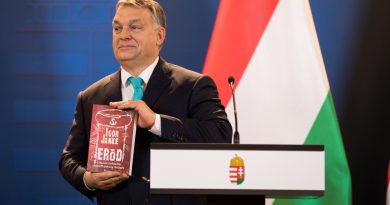U.S.-India Summit Holds Promise
Elizabeth Denton
Staff Writer
President Donald Trump invited India’s Prime Minister Narendra Modi to meet with him in Washington last week.
The Council on Foreign Relations reports that the top issue on the meeting agenda was bilateral trade. Previous United States administrations have stated that China poses a threat to the U.S.-led order, and many believe a U.S. partnership with India is a part of a strategy to maintain U.S. global power. However, the U.S. has a weak grasp on India’s interests, especially regarding India’s position on the different norms that serve as the foundation of the U.S. liberal international order. The U.S. also disagrees with India’s policies of protectionism, while India finds the U.S.’s accommodations of its position as a developing country insufficient.
Under Prime Minister Modi, the Indian government agreed to the deportation of undocumented migrants back to India and announced it would cut tariffs on most cars and high-end motorcycles that impact U.S. producers. According to Foreign Policy, India is also looking at the possibility of higher energy imports such as oil, gas, and civilian nuclear reactors, from the U.S.
The two leaders stated their intentions to negotiate a bilateral trade initiative and plan to conclude the first phase later this year. In addition, they reaffirmed defense equipment sales and hinted at significant steps in military interoperability. The Center for Strategic and International Studies reports that what may have pushed President Trump’s cooperation is the fact that India is the largest source foreign students and skilled immigrants entering the U.S. India is also expected to become the world’s third-largest economy during the current presidential term.
In terms of agreements coming from this meeting, President Trump and Prime Minister Modi launched the initiative U.S.-India COMPACT (Catalyzing Opportunities for Military Partnership, Accelerated Commerce & Technology) for the 21st Century. According to a statement released by the , they also created a ten-year framework for the U.S.-India Major defense Partnership in the 21st Century, plans to review respective arms transfer regulations to streamline defense trade, resolutions to expand and deepen the U.S.-India trade relationship, agreements recognizing that energy security is fundamental to economic growth, as well as commitments to deepening bilateral dialogue and cooperation across the Indian Ocean region and launch the Indian Ocean Strategic Venture.
Prior to the meeting, military experts in India have expressed guarded optimism regarding military cooperation between the two nations. The Associated Press reports that the two leaders outlined plans to increase sales of defense systems to New Delhi, such as the sale of F-35 stealth fighter jets. The leaders also pledged to elevate military cooperation across the domains of air, land, sea, space, and cyberspace. Major Indian purchases from the U.S. include equipment such as C-130 transport aircraft, missiles, drones, and long-range maritime patrol aircraft.
Currently, New Delhi is dependent on Russia for military and defense cooperation, and analysts believe it will take years to reduce India’s reliance on Russia. Even with increased defense collaboration with the U.S., India will face struggles in obtaining parts and upgrades to military materials.
Image courtesy of Getty Images.


